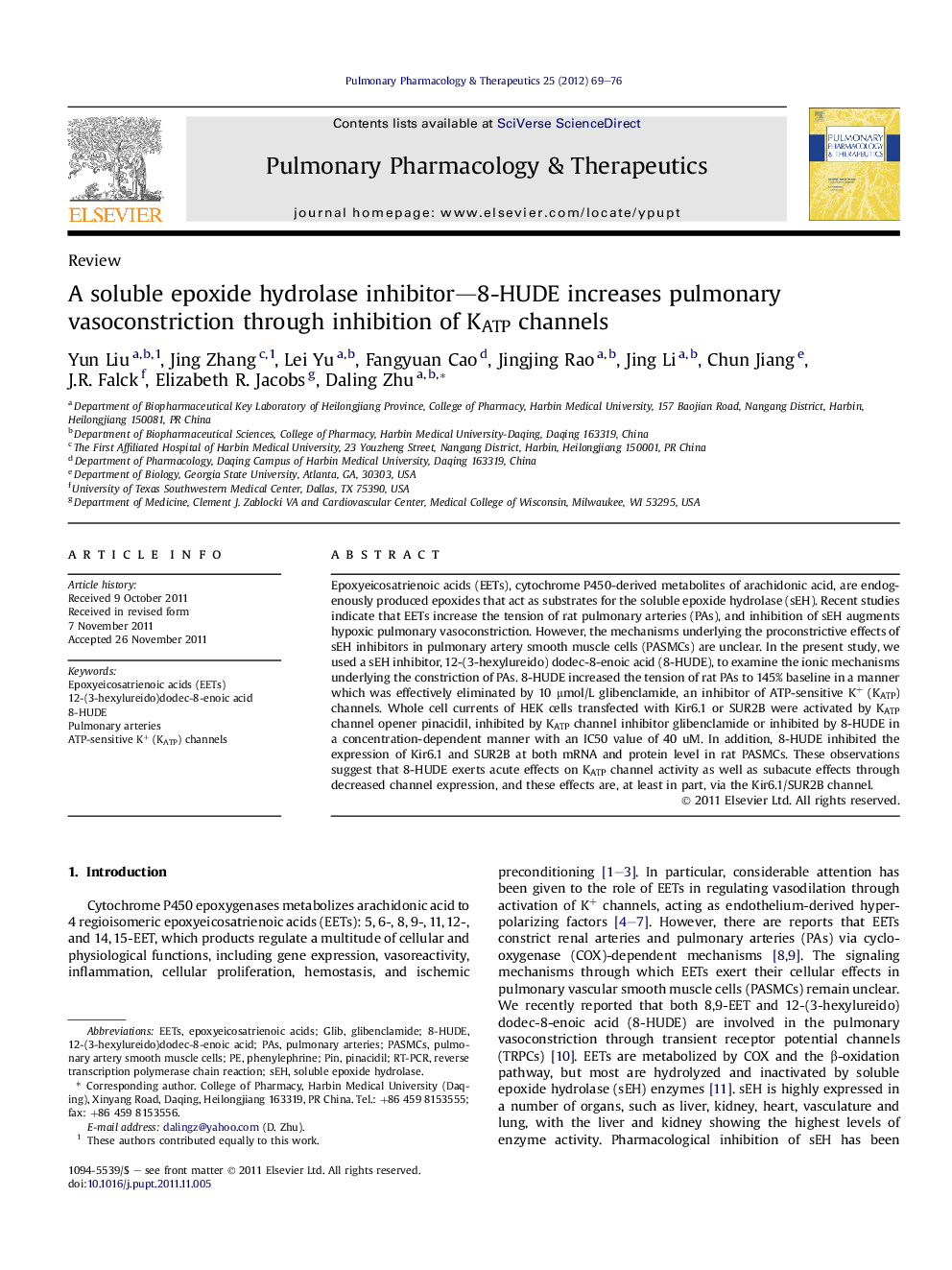| Article ID | Journal | Published Year | Pages | File Type |
|---|---|---|---|---|
| 2567194 | Pulmonary Pharmacology & Therapeutics | 2012 | 8 Pages |
Abstract
Epoxyeicosatrienoic acids (EETs), cytochrome P450-derived metabolites of arachidonic acid, are endogenously produced epoxides that act as substrates for the soluble epoxide hydrolase (sEH). Recent studies indicate that EETs increase the tension of rat pulmonary arteries (PAs), and inhibition of sEH augments hypoxic pulmonary vasoconstriction. However, the mechanisms underlying the proconstrictive effects of sEH inhibitors in pulmonary artery smooth muscle cells (PASMCs) are unclear. In the present study, we used a sEH inhibitor, 12-(3-hexylureido) dodec-8-enoic acid (8-HUDE), to examine the ionic mechanisms underlying the constriction of PAs. 8-HUDE increased the tension of rat PAs to 145% baseline in a manner which was effectively eliminated by 10 μmol/L glibenclamide, an inhibitor of ATP-sensitive K+ (KATP) channels. Whole cell currents of HEK cells transfected with Kir6.1 or SUR2B were activated by KATP channel opener pinacidil, inhibited by KATP channel inhibitor glibenclamide or inhibited by 8-HUDE in a concentration-dependent manner with an IC50 value of 40 uM. In addition, 8-HUDE inhibited the expression of Kir6.1 and SUR2B at both mRNA and protein level in rat PASMCs. These observations suggest that 8-HUDE exerts acute effects on KATP channel activity as well as subacute effects through decreased channel expression, and these effects are, at least in part, via the Kir6.1/SUR2B channel.
Keywords
Related Topics
Health Sciences
Medicine and Dentistry
Pulmonary and Respiratory Medicine
Authors
Yun Liu, Jing Zhang, Lei Yu, Fangyuan Cao, Jingjing Rao, Jing Li, Chun Jiang, J.R. Falck, Elizabeth R. Jacobs, Daling Zhu,
